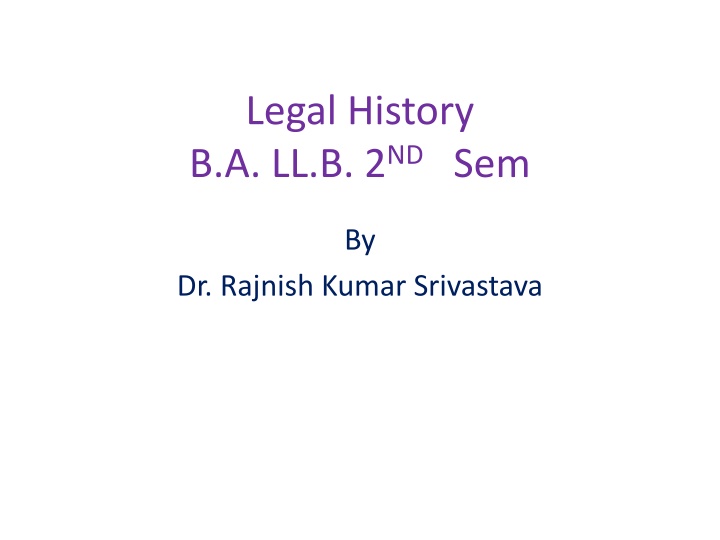
Charter of 1753 and Legal History: Amendments and Court Establishments
Explore the Charter of 1753, a modified form of the 1726 Charter, focusing on amendments, restrictions on mayoral powers, establishment of the Court of Request for cheaper justice, and the creation of five different courts including the Privy Council and Criminal Court.
Uploaded on | 0 Views
Download Presentation

Please find below an Image/Link to download the presentation.
The content on the website is provided AS IS for your information and personal use only. It may not be sold, licensed, or shared on other websites without obtaining consent from the author. If you encounter any issues during the download, it is possible that the publisher has removed the file from their server.
You are allowed to download the files provided on this website for personal or commercial use, subject to the condition that they are used lawfully. All files are the property of their respective owners.
The content on the website is provided AS IS for your information and personal use only. It may not be sold, licensed, or shared on other websites without obtaining consent from the author.
E N D
Presentation Transcript
Legal History B.A. LL.B. 2NDSem By Dr. Rajnish Kumar Srivastava
Charter of 1753 Charter of 1753 was the modified form of the Charter of 1726, as it was amended only by a few changes in the old Charter. The effort was to end the dispute which had already arisen between the mayor's courts and the government.
In the Charter of 1753 the right to appoint the mayor and alderman were given to the governor and his council and the governor had also the right to remove them from office. In this way the freedom of the mayor corporation and the mayor court was restricted and both are under the governor and his council. Similarly, through this charter a direction was issued to the mayor 's court that they could not exercise their jurisdiction over Indians unless the Indian voluntarily submitted their disputes to this court.
Through this charter, a lower court known as the 'Court of Request' was established to provide cheaper and quicker justice to the poor persons through an simple process. civil cases up to Rs. 15 had to come under the jurisdiction of the court of request. No litigation under the jurisdiction of the court of request should be filed before the mayor court and it was provided that the plaintiff would have to pay damages to the defendant in the form of costs of the suit if such suit was brought before the mayor's court.
Certain special provisions in respect of the mayor's court were made separately, such as the court could hear cases against the mayor , company and the administration, and make rules for its functioning. If a judge is interested in the case, he shall not hear the suit as a judge, the fees received by the court shall be deposited in the public exchequer. By the charter of 1753, five kinds of courts were established
First - prayer court , which is made for poor person and could hear a civil case of up to Rs. 15. Second - mayor 's court which considered civil suits of up to Rs. 15, but the Indian citizens were not in its jurisdiction until they came to the court willingly, Third - governor and council court who hearing the appeal of suits disposed of by the mayor's court,
Fourth - privy council, in which the cases considered in appeal of up to Rs. 3000 decided by the governor and his council . This appellate court was situated in England. Fifth - criminal court, which served as a Justice of Peace by the governor and his council for the administration of justice, had the same provisions as in the charter of 1726.
System provided in the Charter of 1753 was not satisfactory, as the judiciary was not independent. Independence of the judiciary was made under the governor and council. The members of the judiciary were appointed by the governor. Moreover, the judges belonged to the traders and, therefore, they don't anything about law. Moreover, they had to make use of the English method which they did not have complete knowledge. There was no effective system in this Charter for the Indian cases which valuation was more than Rs. 15.
There were many weaknesses are In the criminal justice system also. The members of the courts were members of the executive and therefore they unable to prevent the offences committed by the employees of the company. Thus the employees of the company took advantage of their position against the interests of the people and committed several Torts. It was, therefore, futile to expect the company 's servants to do impartial justice by sitting in the courts.
This system was continued till 1774. But the deficiencies of this system did not give satisfactory results and in 1773 the Regulating Act was passed and in 1774 the Supreme Court of Calcutta was established to correct the deficiencies of the judicial system which had so far been in practice.
